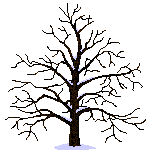





(707)
792 - 9141
792 - 9141
In Sonoma County, beautiful northern California - 6225 Stony Point Rd - corner hwy 116 and Stony Point, Cotati, 94931
| Home | About Us | Location and Hours | Koi | Pond Services | Pond Supplies | Water Plants | Pond Dwellers | Dwarf Conifers | Hostas | Japanese Maples | Other Plants | Trees | Garden Sculpture | Garden Goodies | Pondsai | Contact Us
Serving Sonoma County for 15 years !
New Shipment!



Copyright 2007-2010 by Pond and Garden Nursery - All Rights Reserved Contact: info@pondandgardennursery.com
Sun or Shade?
Most cultivated varities thrive in full sun, though others prefer living in the shade.
Some will do quite well in almost any degree of light in between.
Most cultivated varities thrive in full sun, though others prefer living in the shade.
Some will do quite well in almost any degree of light in between.
Size At maturity, these amazing trees can reach heights varying from two to over thirty feet.
Sometimes these are catagorized by leaf shape.
Depending upon the cultivated variety, the maple leaves can either be broad, flat and palm-shaped, or lacy.
Depending upon the cultivated variety, the maple leaves can either be broad, flat and palm-shaped, or lacy.

Japanese Maple Leaf Types
More About Japanese Maples
Tempura Japanese Maple Leaves Recipe
1. Clean Japanese red maple leaves with a wet towel
2. Make tempura batter (see recipe)
3. Heat vegetable oil in a deep pan to 350 F degree
4. Lightly dip one side of a Japanese maple leaf in the batter
5. Immediately fry them until brown
6. Drain tempura on a rack
7. Enjoy
1. Clean Japanese red maple leaves with a wet towel
2. Make tempura batter (see recipe)
3. Heat vegetable oil in a deep pan to 350 F degree
4. Lightly dip one side of a Japanese maple leaf in the batter
5. Immediately fry them until brown
6. Drain tempura on a rack
7. Enjoy
Did you know that some people eat Japanese Maple leaves? The red leaves are said to make the tempura an interesting color. It isn't terribly common, but I found a recipe, in case you are interested:
Tempura Recipe
1. Beat 1 egg in a bowl
2. Add 1 cup ice water
3. Add 1 cup sifted all purpose flour
4. Mix Lightly (Be careful not to overmix)
1. Beat 1 egg in a bowl
2. Add 1 cup ice water
3. Add 1 cup sifted all purpose flour
4. Mix Lightly (Be careful not to overmix)
Japanese Maple Factoids . . .
Where do Japanese Maples come from?
This maple is native to China and Japan.
It is a popular bonsai subject in Japan.
This maple is native to China and Japan.
It is a popular bonsai subject in Japan.
Traditionally, gardeners say that the burning effect happens because of water droplets acting like a lens to concentrate the sunlight. Nobody knows for sure, but both arguments make sense.
Japanese Maples
Folklore
Soil Preference
Japanese Red Maples prefer a slightly acid soil, a well drained organic soil mix is prefered.
Japanese Red Maples prefer a slightly acid soil, a well drained organic soil mix is prefered.
Who else loves these trees?
Squirrels and chipmunks are very fond of maple seeds.
The seeds, buds, and flowers are also eaten by grouse, quail and many songbirds.
Squirrels and chipmunks are very fond of maple seeds.
The seeds, buds, and flowers are also eaten by grouse, quail and many songbirds.
When to Plant?
The best time to plant your Japanese Maple is in the fall.
The best time to plant your Japanese Maple is in the fall.
In the Celtic tradition, the maple is related to those with birthdays from April 11-20th. It represents independence of mind. A person born in this time is no ordinary person, but is full of imagination and originality, shy and reserved; ambitious, proud, self-confident, hungers for new experiences, sometimes nervous, has many complexities, good memory, learns easily, complicated love life, wants to impress.
Passing a young child through the branches of a maple tree is thought to encourage good health and longevity of life for the child, signifying success and abundance.
Passing a young child through the branches of a maple tree is thought to encourage good health and longevity of life for the child, signifying success and abundance.
The Name..
The Japanese word "momiji" is sometimes applied to this tree. The word is said to have two meanings, both of them appropriate for the description of this wonderful tree: "baby's hands" and " becomes crimson leaves."
The Japanese word "momiji" is sometimes applied to this tree. The word is said to have two meanings, both of them appropriate for the description of this wonderful tree: "baby's hands" and " becomes crimson leaves."
The delicate foliage can "burn" if exposed to direct summer sun.
Water well in early morning or late afternoon to prevent the soil from drying out.
Water well in early morning or late afternoon to prevent the soil from drying out.
Another opinion says that maples do not burn because of exposure to the sun per se, but rather because of dissolved minerals in the water supply, which build up in the leaves, making them more susceptible to browning and curling when exposed to strong sunlight.
The Japanese Red Maple is a tree that has been cultured intensively for over 300 years.

Folklore
More Japanese Maple Factoids . . .
